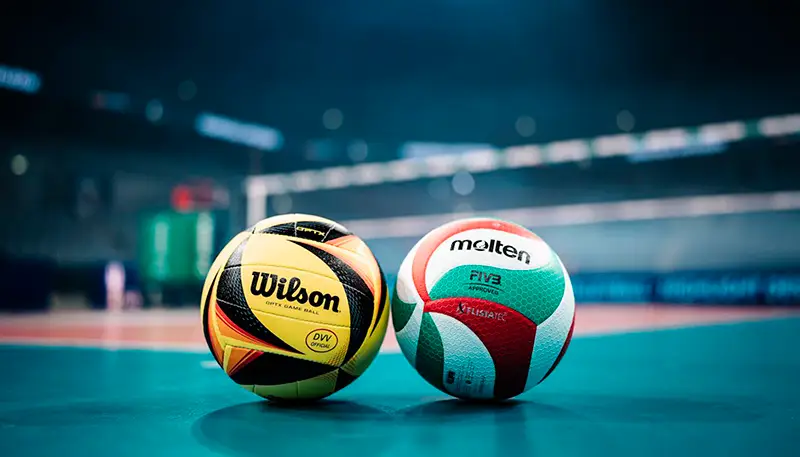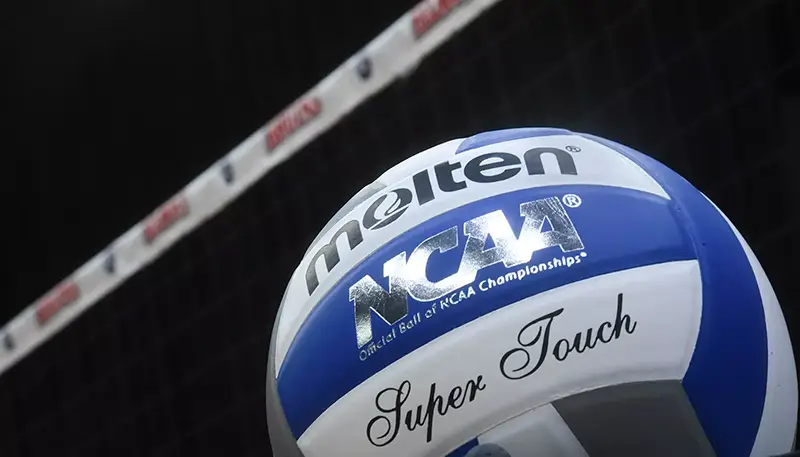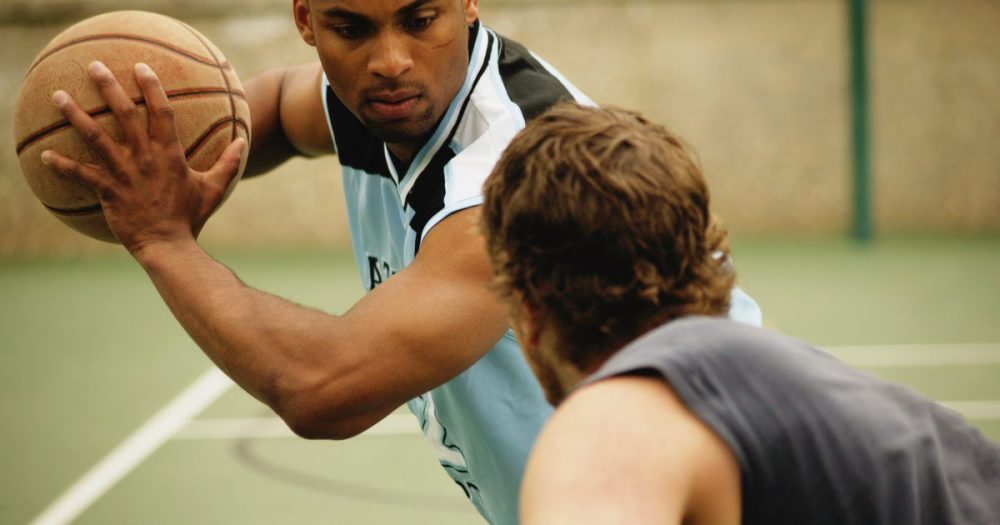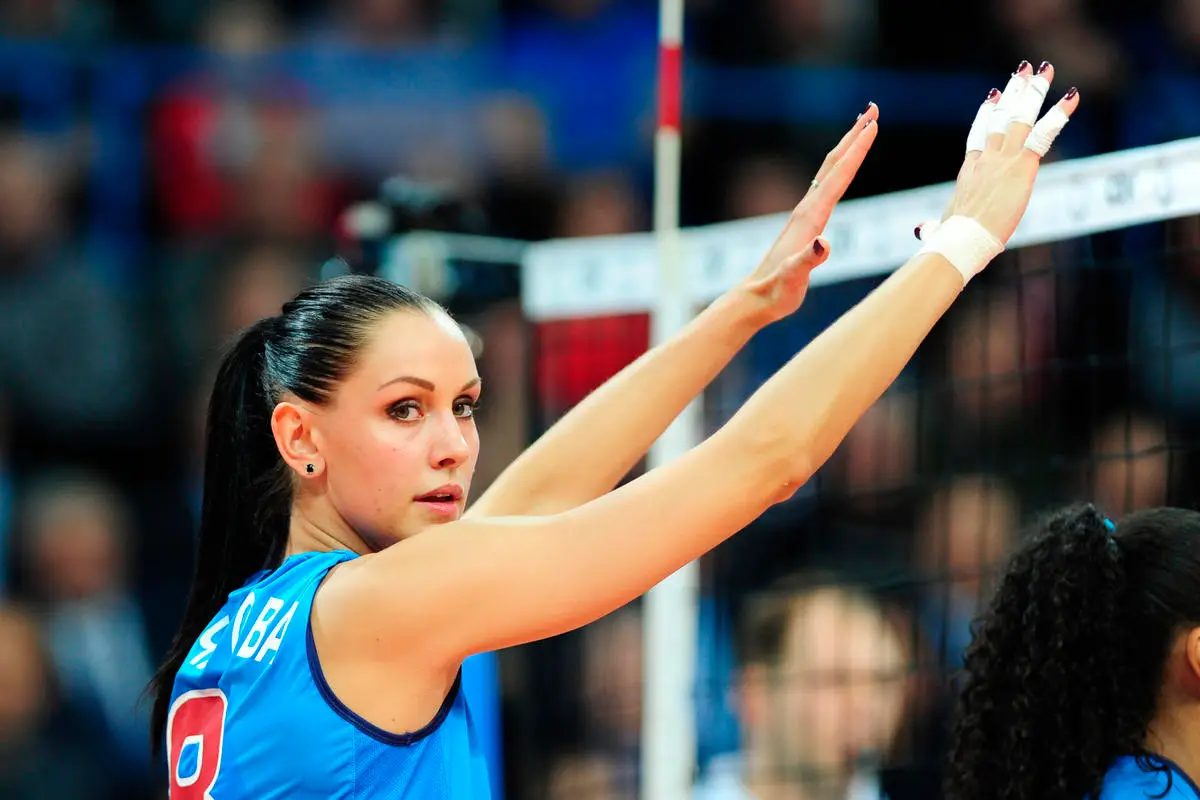Penalty serves win games, not games, but confidence – and volleyball selection is on the same list. The wrong sports equipment turns training into a fight for survival. The right one unlocks potential, reduces the risk of injury, makes the game process cleaner, more entertaining, more effective. In the article we will analyse how to choose a volleyball correctly.
Dimensions of volleyball equipment
Parameters determine everything. The International Volleyball Federation (FIVB) has set a standard: circulation – 65-67 cm, diameter – about 21 cm. This is the kind of shell used in the Olympic Games and World Championships.
Children’s and training models can have a reduced volume of 60-63 cm to reduce the load on the wrists and facilitate coordination.

When deciding which ball to choose for volleyball, it is important to consider not only the age of the players, but also the purpose. Whether for practice, official matches or initial training, each type requires the right equipment. Ignoring the standard is a direct path to distorted technique and inefficient play.
Volleyball weight: balance between speed and control
The official weight is 260-280 grams. This is the result of hundreds of tests. Less weight makes feeding less predictable, increases air resistance, and makes machining more difficult. Heavy models cause rapid fatigue and overloading of the elbow joint.
Serious brands like Mikasa V200W and Molten V5M5000 strictly adhere to the standard. Each of their products passes accuracy control down to 0.5 grams.
The question: which ball to choose for volleyball, it is worth starting with these models. They meet international requirements and are used at the professional level.
Volleyball materials: What’s inside affects the result
 The classic option is synthetic leather, which is resistant to wear and moisture. Modern developments include microfibre with EVA foam, providing a soft touch and elastic bounce.
The classic option is synthetic leather, which is resistant to wear and moisture. Modern developments include microfibre with EVA foam, providing a soft touch and elastic bounce.
Budget versions are covered with PVC – cheap, but slippery and short-lived. High-quality models use polyurethane in three layers: the outer one for durability, the middle one for cushioning, and the inner one for precise geometry.
When choosing which ball to choose for volleyball, experienced coaches focus on the appearance and internal structure. Microfibre reduces the impact load on the fingers, reduces the risk of micro-traumas and increases sensitivity.
Choose where you play: indoor vs. outdoor
A volleyball for the gym requires softness, perfect sphericity and minimal bounce on the floor. Example – Mikasa V200W, a model with 18 panels and anti-slip surface.
A volleyball for the street must be able to withstand asphalt, sand, moisture and sunlight. Wear-resistant coverings and sealing are important here. The ideal example is Wilson AVP Soft Play with a moisture-resistant shell and reinforced seam technology.
To understand exactly which equipment to choose for volleyball, the court must be taken into account. The wrong choice will lead to rapid deformation, loss of pressure and reduced playing comfort.
How to choose a sports equipment: a professional’s checklist
Every purchase is an investment. For a beginner, the choice turns into a quest. In order not to make a mistake, it is better to use a proven algorithm.
What ball to choose for volleyball, criteria:
- Purpose – training, game, competition.
- Coating – polyurethane, microfibre, PVC.
- Weight – 260-280 g for adults, up to 250 g for juniors.
- Size – standard for official games, reduced size for beginners.
- Type of court – hall, street, sand.
- Chamber – butyl chamber keeps air longer.
- Manufacturer – Mikasa, Molten, Wilson, Gala.
- Certificates – FIVB Approved, NFHS.
- Moisture resistance – mandatory for outdoor models.
- Warranty – at least 1 year for seams and pressure.
The list covers all aspects that help determine which ball to choose for volleyball.
Care of the volleyball
It is not a consumable, but a tool. With proper care, the ball retains its shape, pressure and elasticity for up to 3 years. Ignoring simple rules shortens the service life by 2-3 times.
Storage requires temperatures between 10 and 25 °C, without direct sunlight. Moisture and frost cause cracks, breaking the tightness. After playing outdoors, the ball should be wiped with a dry cloth, especially after a sandy or wet surface.
It is recommended to check the pressure every week. The standard is 0.30-0.325 kgf/cm². Levels lower than this result in unstable bounce, higher levels result in stiffness and risk of seam rupture. A pressure gauge with a fine needle is used for precise control.
It is essential to lubricate the needle before pumping. Otherwise there is a risk of damaging the valve. In regular use, the shell should be checked every 3 months. At the first signs of deformation, it is better to replace rather than repair.
To decide which ball to choose for volleyball, it is important to immediately assess how easy it is to maintain the model. The easier it is to maintain – the higher the real value of even an expensive purchase.
Quality or just expensive: how not to buy too much
Price does not guarantee results. Quality volleyball equipment always offers a clear combination: compliance with standards, resistance to stress, predictable flight behaviour.
A durable ball does not lose its shape after 1,000 strokes. In the more expensive models, the wear of the panels, the strength of the valve and the stability of the seams are tested. In the Molten V5M5000 series, each piece can withstand more than 5 bar of pressure without losing its shape.

Some brands inflate the price at the expense of design. Colour and style are a bonus, but not a selection parameter. You can also check the quality manually – press, roll on the floor, test for rebound symmetry. A deviation of 1-2 cm from the vertical is a signal of deviation from the norm.
When deciding which ball to choose for volleyball, it is not the price that matters, but the totality of characteristics. The most expensive is not always the best, the cheapest is not always a failure.
How to choose a basketball: conclusions
 A clear understanding of the parameters, the court and the purpose of the gameplay, allows you to determine without error which ball to choose for volleyball. Ignoring standards, skimping on materials, choosing random brands leads to poor results and wasted time.
A clear understanding of the parameters, the court and the purpose of the gameplay, allows you to determine without error which ball to choose for volleyball. Ignoring standards, skimping on materials, choosing random brands leads to poor results and wasted time.
Prioritise functionality over wrapping. Experienced players and coaches always favour proven models with international certification and stable behaviour on the court. Accuracy, durability, predictability – three criteria that determine success in the game and in the selection.
 en
en  ru
ru  de
de  ar
ar  es
es  hi
hi  fr
fr  nl
nl  it
it  pt
pt  el
el 



